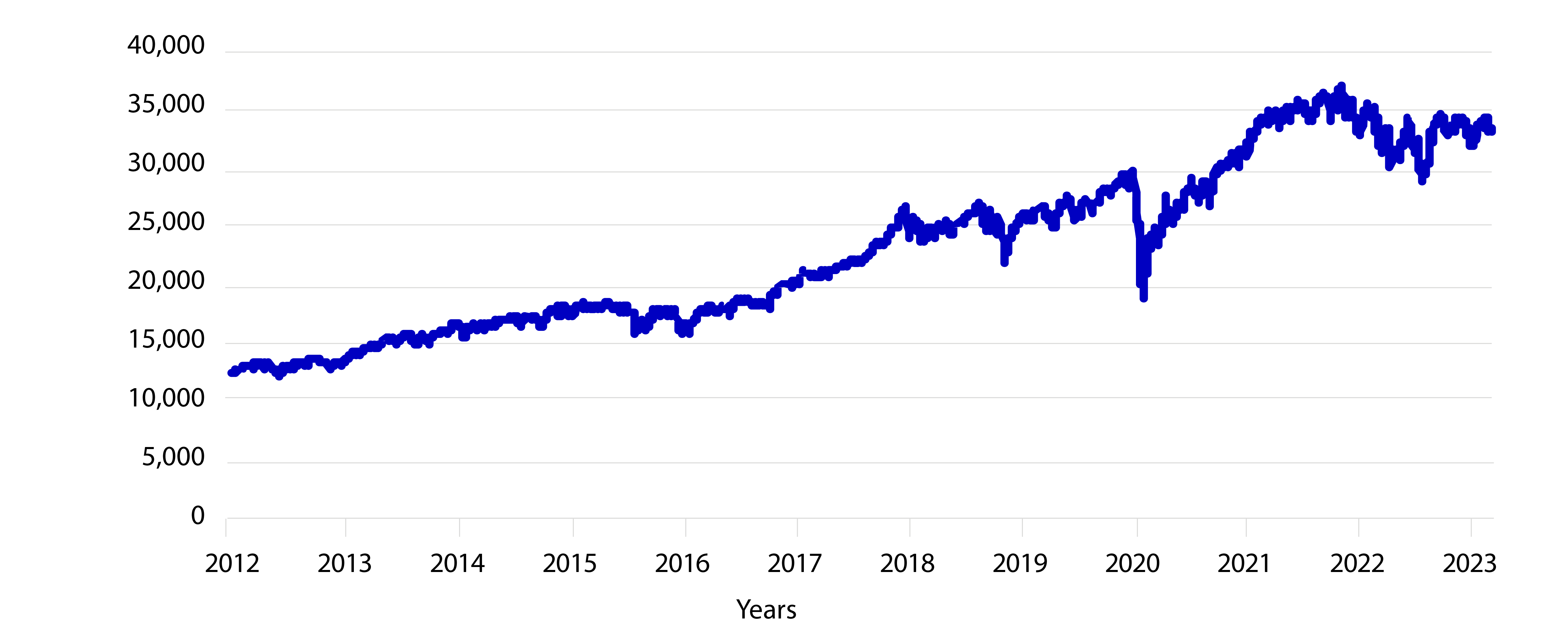What to do when your emotions go up and down with the market
Over the long run, the stock market has historically gone up. In the short run, it can go up and down quite a bit, taking your emotions along for the ride if you’re invested in the market. But your emotions don’t generally belong in your investment decisions—being happy or sad when the market is up or down isn’t a foundation for thoughtful decision-making. Understanding how the market works can help you stay steady when the stock market is on a roller-coaster ride.

Understanding the ups and downs of the stock market
People who love roller coasters love the thrill of the fast ups, downs, and curves. What’s fun at an amusement park, however, can make people a little nervous in a stock market. But just like a roller coaster, the nature of the stock market is to move up and down. Why? Because it reacts to the economy, which is also full of highs and lows. Interest rates, employment metrics, company performance, and consumer confidence could all change from day to day or month to month, and they all have an impact on the stock market. In spite of these periodic bumps and troughs, however, over the long run, markets have tended to go up.
The long view shows that the market grew from 2012 to 2023
As measured by the DJIA in dollars ($)

As a result, a basic investment strategy for long-term goals, such as retirement, is to consider leaving money in the market during short-term fluctuations—meaning don’t jump off in the middle of the roller-coaster ride. Although there are some people who have the investment knowledge to take advantage of a rocky market and make a return on their investment, most retirement savers don’t have that skill. In fact, 57% of American workers say they aren’t knowledgeable about investments—so if you fall in that category, a strategy may be to consider taking a hands-off approach during bumpy market cycles.
It can be tempting to act on emotions when the stock market is in flux, and unfortunately, emotions lead people to take the opposite action they should take. See below how investors feel as their investments are going up in value, and then falling in value.
When the stock market is on the rise—also known as a bull market—investors who see their investments going up tend to feel confident because their portfolio values are doing what the market is doing—going up. They eventually feel euphoric, as values reach their peak.
When the stock market starts to fall—also known as a bear market—investors who see their investment values dropping with the market tend to get nervous, even desperate and defeated, when they see their values drop below their initial investment.
Ironically, when many investors feel euphoric, it’s actually the riskiest part of the market cycle. And when many investors feel defeated, the market usually holds the most opportunity to make money. That means that investors who act on their emotions are doing the opposite of what conventional investment wisdom would suggest.
Riding the roller coaster of the market cycle
Once you understand that the market can go up and down in the short term, but tends to go up over the long term, you can see why conventional wisdom usually suggests different investment strategies for short- and long-term goals:
- Short-term goals—If you’re saving for a goal that’s three to five years out, such as for a new car, you may consider keeping your money in a more conservative investment strategy, so it may have a better chance of maintaining its value.
- Long-term goals—If you’re saving for a goal that’s 10 or more years out, such as retirement, you may consider an investment strategy in more growth-oriented funds. Doing so can help the value of your money keep up with inflation. With time, your money may have the potential to grow and weather market downturns.
Continuing to invest through both high and low market cycles may also give you the potential to benefit from something called dollar cost averaging.1 When the market is high, you’re likely paying a high price for your investment and getting relatively few shares. When the market is low, you’re paying less for the investment and getting more shares for the money. Over time, this helps you average out the highs and lows—and it’s called dollar cost averaging—but it only works if you continue to invest in both high and low markets.
Keep your emotions out of investment decisions
Although it can be unnerving to watch your investment values rise and fall, it’s important to remember that over time, the market has historically gone up. And if you’re invested for the long term, a strategy to consider is to leave your money in the market for the long term. Don’t be fooled by your emotions: Just because you’re happy when the market is up doesn’t make it a good time to buy; likewise, being sad in a down market doesn’t mean it’s a reason to sell. Stay focused on your goal—having that focal point can help keep you from feeling dizzy and making the wrong move when the market is topsy turvy.
1 Dollar cost averaging does not guarantee a profit or eliminate the risk of a loss. Systematic investing involves continuous investment in securities, regardless of price-level fluctuation. Participants should consider their resources to continue the strategy over the long term.
For complete information about a particular investment option, please read the fund prospectus. You should carefully consider the objectives, risks, charges and expenses before investing. The prospectus contains this and other important information about the investment option and investment company. Please read the prospectus carefully before you invest or send money. Prospectus may only be available in English.
Perspectives on market volatility
Visit our market volatility resource page for more helpful articles about the financial markets and the economy.
Important disclosures
Important disclosures
As market conditions change, so may the risk/reward potential of these investment types.
There is no guarantee that any investment strategy will achieve its objectives. Past performance does not guarantee future results.
It is your responsibility to select and monitor your investment options to meet your retirement objectives. You should review your investment strategy at least annually. You may also want to consult your own independent investment or tax advisor or legal counsel.
The content of this document is for general information only and is believed to be accurate and reliable as of the posting date, but may be subject to change. It is not intended to provide investment, tax, plan design, or legal advice (unless otherwise indicated). Please consult your own independent advisor as to any investment, tax, or legal statements made.
MGR1206233259821


